9 /10 1 Votes
4.8/5 CoolROM Release date(s) December 1993 Series FIFA | 4.7/5 Let's Play SEGA 4/5 GamesNostalgia Initial release date 1993 Genre Sports game | |||||||||||||||||||||||||||||||||
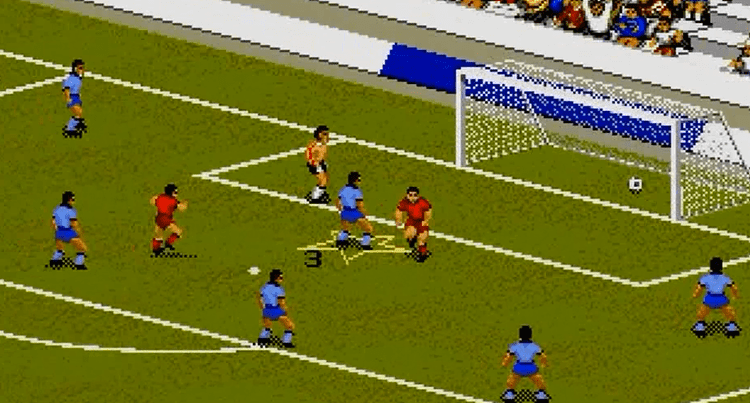 | ||||||||||||||||||||||||||||||||||
Similar FIFA games, EA Canada games, Football games | ||||||||||||||||||||||||||||||||||
Fifa international soccer gameplay pc game 1993
FIFA International Soccer is a 1993 sports video game developed by EA Canada's Extended Play Productions team and published by Electronic Arts. Based on the sport of association football, the game tasks the player with controlling a football team. The game was released for the Sega Genesis/Mega Drive console in December 1993 and ported to numerous other systems in 1994.
Contents
- Fifa international soccer gameplay pc game 1993
- Super nintendo fifa international soccer 1994
- Gameplay
- Development
- Sales
- Critical
- Legacy
- References
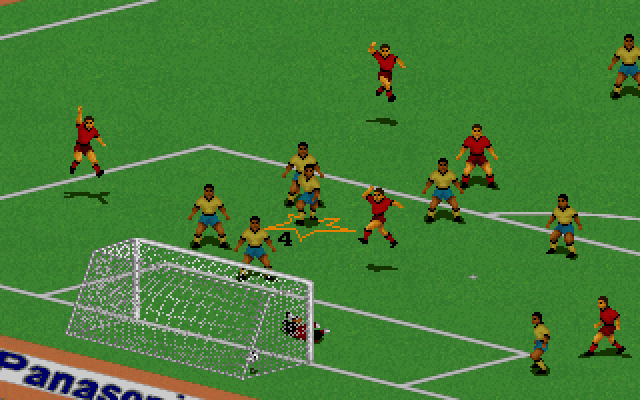
The game was positively received on release; critics lauded the detail and animation of the footballers in the game, the crowd sound effects and the overall presentation. The speed the game ran at and issues with the response to the player's input were seen as the game's primary faults. The game sold well, served as a pack-in game for the Goldstar 3DO, and led to a sequel, FIFA Soccer 95. It was the first game in the FIFA series.
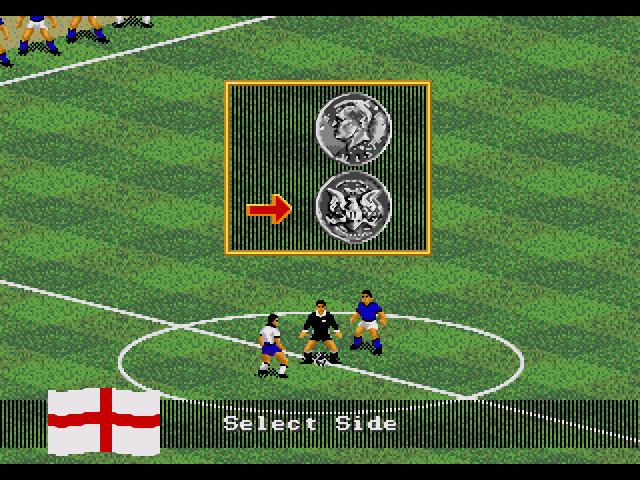
Super nintendo fifa international soccer 1994
Gameplay
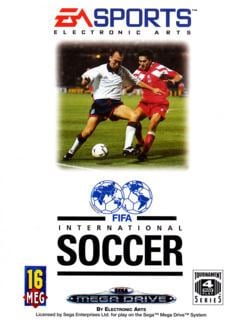
FIFA International Soccer is a video game that created one of the earliest full simulations of association football. In particular, the game is based on international matches. The game utilises an isometric viewpoint, unlike other football games at the time such as Sensible Soccer which utilised a birds-eye view or Kick Off which used a top-down view. The player controls one of the eleven footballers on their team at a time, with the ability to switch players on command. The game allows up to four human players at the same time, each controlling a different footballer. The players can choose to control a footballer on the same team or on opposing teams. The remaining footballers are controlled by the computer.
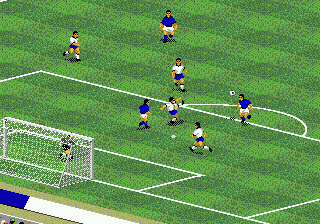
Four modes of play — Exhibition, Tournament, Playoffs and League — are available. Exhibition engages the player in a single match. Tournament mode resembles the format of the FIFA World Cup, with the player controlling a team of their choice through a series of matches, starting with three group games with the possibility of progressing to four further games in a knockout format. Playoffs mode takes the same form, but skips the group games and starts at the first knockout game. League consists of eight teams who contest a double round-robin tournament.

The game features 48 national teams in total, plus a team called EA All Stars. Every team has 20 players. The players are fictional (some of them, e.g. Tim Ansell of England or Joe Della-Savia of Italy, are named after people credited as the development team) and look the same, except for the fact that the players of certain teams have a darker skin.
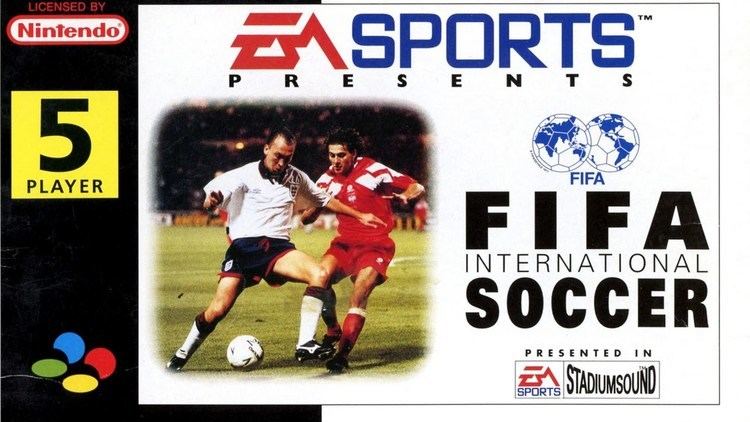
An oversight by the developers makes it easy to score a goal by making a player stand in front of the opponent's goalkeeper when he holds the ball in his hands and is about to clear it away. The computer-controlled goalkeeper will kick the ball into the opposing player, giving the latter an easy chance to score.
Development
Electronic Arts (EA) had first ventured in the sports games market in 1988 with an American football title, John Madden Football. Updated versions of the game, along with golf and ice hockey games followed under the EASN (Electronic Arts Sports Network) banner. EA's European arm carried out research into the possibility of a sports game that would appeal to a European audience and decided that a football game would stand the best chance of success, predicting high sales figures. EA US gave the go-ahead for the project to proceed, and a team of ten developers at EA's Canadian studios began work on the project led by Bruce McMillan. Initially, the development took place for the Sega Genesis under the working title of EA Soccer, with a small budget of around $50,000-$100,000.
Other EA Sports titles held official licences from the leagues depicted to allow real team names, players and stadiums to be included, and with a view to securing the same for their football title, EA signed a five-year deal with football's governing body, FIFA. The deal involved "minuscule" royalty payments, and on further inspection the reason became clear. The licence didn't include any team names, logos, player names, likenesses or stadiums. The game would therefore only include national teams identified by country names and flags, and player names would be made up - several of the developers added their own names into the game. The licence for the forthcoming 1994 FIFA World Cup tournament was held by US Gold and their game was due for a Spring 1994 release in time for the tournament which was to take place in Summer 1994. EA decided they would need to bring forward their game ahead of the US Gold title, and aimed for a Christmas 1993 release.
Questioning the recognition that the FIFA licence held in North America, EA suggested the game be released as Team USA Soccer in North America. Fearing a sales flop, they reversed the decision and decided to release the game worldwide under the FIFA International Soccer title, providing the option of moving unsold stock to other markets. Development of the game was completed in November 1993.
Sales
EA anticipated sales of around 300,000 copies of the game in Europe. In the first four weeks alone, over 500,000 sales were made, and despite its December release, became the best selling game of 1993.
Critical
FIFA International Soccer received mostly positive comments from the press. Reviewing the original Genesis/Mega Drive version, Edge magazine praised the way the crowd sounds reacted to the play on the field as well as the visual detail of the players and their animations with the isometric view. They highlighted that this did make for a slower game than one using a top-down view and described it a more of a simulator than a console game. Mean Machines Sega described the game as the "greatest soccer game yet seen", praising the "superlative presentation" and the "utterly amazing" animation. With only minor concerns around the response time to the players input and the lack of an on-screen clock graphic, they awarded a score of 96%.
GamePro gave the SNES version a positive review, commenting that "Strong and varied game play makes this the most realistic soccer game for the SNES." They also praised the graphics, animation, digitized crowd chants, and accessibility to players of all skill levels. They later commented that the Sega CD version is essentially identical to the Genesis and SNES versions aside from the addition of some full motion video clips, but that this is not a bad thing because the previous versions didn't leave any room for improvement.
Next Generation reviewed the 3DO version, and noted that this port differed considerably from the original Genesis version and most other ports, with the addition of multiple views, a rotating-camera effect and more detailed graphics. They described it as the "killer-app graphics showhorse" for the 3DO console, awarding it a maximum five star score. GamePro similarly remarked "FIFA 3DO is no mere port-over from the cartridge market." They especially praised the highly detailed graphics, multiple views, realistic gameplay, and six-player support.
Reviewing the Amiga port, most publications spoke favourably of the game's appearance. Amiga Power, CU Amiga and The One magazines all highlighted the amount of disk swapping required to play the game as a drawback. Reaction to the changes in the controls required to adapt from the three buttons available on the Mega Drive controller to the single button common on most Amiga joysticks were mixed. Amiga Format said of hitting the button in an attempt to shoot at the goal, "occasionally the ball flies into the onion bag; other times it seems you are just passing the ball to the keeper." Amiga Power described the outcome of pressing the button as random. The One however describes the control system as "excellent - to the point that it's easier to control" in comparison to the Mega Drive.
Legacy
A sequel, FIFA 95, was released exclusively for the Genesis in July 1994. This started the FIFA series, with a new game released every year since in the main series, alongside spin-off series games based around a particular tournament. The series passed 100 million total sales in 2010, and EA's licence to use the FIFA title runs through to 2022.
